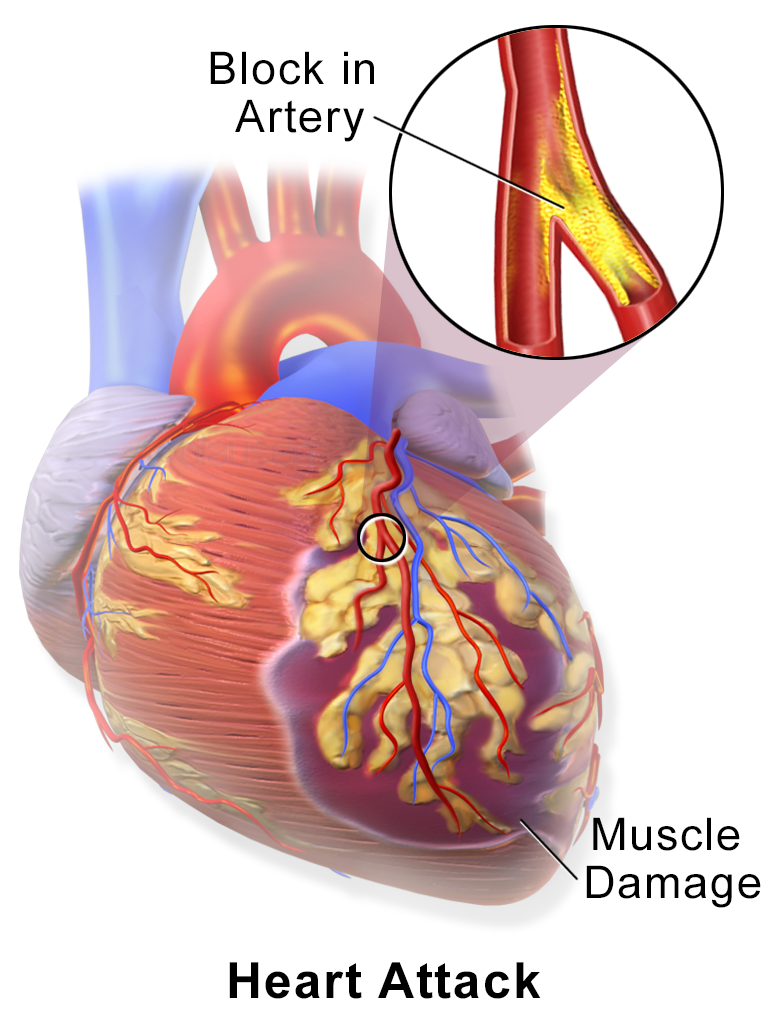Thump-thump, thump-thump, thump-thump. As you read this, your heart - one of the most important organs in our body - is steadily beating within your chest. It’s easy to forget that all day, every day, this muscular organ is providing oxygen and nutrients to the trillions of cells that form the human body. Unfortunately, poor health can affect the heart just as it might affect any other part of the body - and this can cause major problems.

In fact, in the time that it took you to read that paragraph, someone suffered from one of the most serious effects of poor heart health: a heart attack. According to the C.D.C., every 43 seconds, someone in the United States has a heart attack. With so many heart attacks taking place every day, it’s extremely important for people to understand why heart attacks happen - and it’s just as important for people to be able to identify when they’re happening.
Understanding Heart Attacks
A heart attack refers to when the heart is deprived of oxygen because the blood flow to or within the heart muscle becomes blocked. The primary cause of these blockages is coronary heart disease (CHD), a condition where plaque forms within blood vessels and reduces efficient blood flow throughout the body. In some cases, though, a severe spasm or sudden contraction of a coronary artery may also prevent blood flow within the heart muscle and cause a heart attack.
One of the dangers of a heart attack is that it can develop quickly and begin suddenly. In fact, according to the C.D.C., 735,000 Americans have a heart attack each year, and 525,000 of these cases are a first-time heart attack. This means that in most instances, heart attacks are not repeat events. Another danger to be aware of is that 1 out of 5 heart attacks is silent. Silent heart attacks strike and pass with little to no symptoms. But even if there are no symptoms, the heart muscle can still be damaged or weakened - the same as a “regular” heart attack.
Recognizing Heart Attacks
When it comes to heart attacks, timely medical intervention is the key to a full recovery. Because of this, it’s important that both men and women are able to recognize the signs of a heart attack sooner rather than later. According to the National Heart Attack Alert Program and the C.D.C.,, major signs of a heart attack are:
- Pain or discomfort in the chest. Most heart attacks create pain or discomfort in the center or left side of the chest. This discomfort can feel like uncomfortable pressure, squeezing, or a sensation of fullness within the chest. This pain or discomfort may last for minutes at a time, or it may fade and come back repeatedly.
- Pain or discomfort in the upper body. While pain in the chest is most common, pain may also develop in one or both arms, the back, the neck, jaw, or even in the stomach.
- Shortness of breath. This symptom can develop before any other symptoms, although it commonly occurs at the same time as chest discomfort.
- A cold sweat, nausea, and lightheadedness are also all possible symptoms that may be experienced during a heart attack.
It’s particularly noteworthy that while both men and women can experience all of these symptoms, different genders are more likely to experience some symptoms more than others. Men, for example, are more likely to experience and report chest pain, while women often report shortness of breath, nausea or vomiting, and throat, back or jaw pain. Because of this, women are advised to be particularly vigilant for all of the symptoms of a heart attack, as they’re the least likely to experience the most identifiable of symptoms.
Get Help Today
The good news is that even if you have never experienced a heart attack, you can take action today to help address and even prevent one. One of the easiest things you can do is schedule regular appointments with your doctor to help monitor your blood pressure and review your risk factors. This will help ensure that you are working to identify and address any risk factors for heart disease, which will reduce your heart attack risk.
Unfortunately, even good prevention strategies aren’t always foolproof. So remember, if you or anyone you know experiences symptoms that could indicate a heart attack, it’s important that you go to an emergency room as soon as possible. The sooner a heart attack is diagnosed, the better, as this reduces the chances of your heart being seriously damaged, and it will give you a better chance for a successful recovery.

